Argentina is a country known for its stunning landscapes, from the towering peaks of the Andes to the vast plains of the Pampas. But one of the most awe-inspiring natural wonders of this South American nation is its waterfalls. Argentina Waterfalls are some of the most beautiful and powerful waterfalls in the world, and they offer visitors a chance to experience the raw power of nature up close.
From the famous Iguazu Falls to the lesser-known but equally stunning Mocona Falls, Argentina is home to a wide range of waterfalls that are sure to leave you breathless. In this guide, we’ll take a closer look at the top 10 Argentina Waterfalls, and what makes them so special.
Best 10 Argentina Waterfalls
- Iguazu Falls – Devil’s Throat
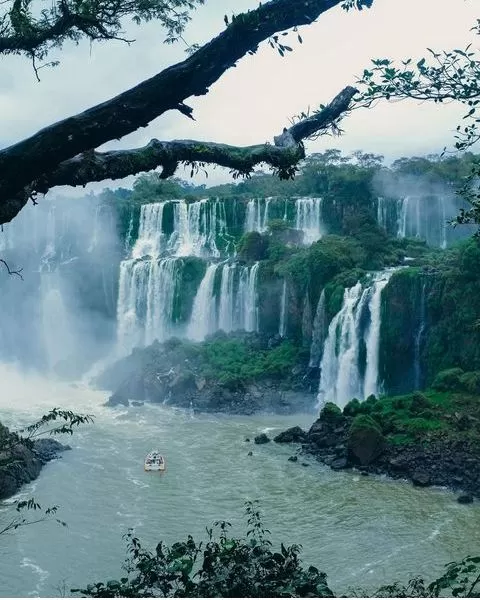
Iguazu Falls is one of the most breathtaking natural wonders of the world. Located in South America, on the border of Argentina and Brazil, this magnificent waterfall system is made up of over 270 individual cascades that stretch for almost three kilometers. In this article, we will explore the geography, history, and culture of Iguazu Falls, as well as the best ways to experience it for yourself.
The Iguazu Falls are powered by the Iguazu River, which flows through both Brazil and Argentina. The river begins its journey in the Serra do Mar mountain range, where it is fed by a combination of underground springs and rainfall. As it travels through a series of plateaus and basins, it gains momentum and strength until it eventually joins the Paraná River – one of the largest rivers on the continent of South America.
The Iguazu Falls are situated in the Iguazu National Park, a protected area that spans across the border of Brazil and Argentina. The park is home to a diverse range of flora and fauna, including more than 400 species of birds, as well as monkeys, jaguars, and other animals.
The park’s protected status helps to preserve the unique ecosystem surrounding the falls and ensures that future generations can continue to enjoy this natural wonder.
The Iguazu Falls are split into two main sections: the Brazilian side and the Argentine side. The Brazilian side offers panoramic views of the falls and has a more extensive trail system, allowing visitors to enjoy a wider range of viewpoints.
Meanwhile, the Argentine side provides a more immersive and up-close experience, with numerous viewpoints that let visitors feel the spray of the falls on their faces. Both sides offer their own unique perspectives and are well worth visiting for anyone looking to experience the awe-inspiring beauty of the Iguazu Falls.
There are many ways to experience Iguazu Falls, from hiking trails and boat rides to helicopter tours and zip-lining adventures. The most popular trails are located on the Argentine side of the falls, where visitors can hike through the lush forest and get a closer look at the cascades.
Boat rides and rafting adventures are also available on both sides of the falls, allowing visitors to get a unique perspective from the water. For those who want to take their experience to new heights, helicopter tours and zip-lining adventures are also available, providing stunning aerial views of the falls and the surrounding landscape.
Iguazu Falls has a long and rich history, both in indigenous legends and modern-day tourism. According to the Guarani people, who have lived in the area for thousands of years, the falls were created by a powerful god who was in love with a beautiful woman. When the woman fled from the god, he sliced the river in two, creating the falls as a symbol of his eternal love.
The Iguazu Falls are an increasingly popular tourist attraction, with millions of visitors flocking to the area each year to behold its awe-inspiring beauty and power. In response to the growing tourism industry, both Brazil and Argentina have prioritized conservation efforts aimed at protecting the park’s natural resources and minimizing the impact of tourism on the area.
These conservation efforts are of utmost importance, as they help to ensure that the Iguazu Falls and its surrounding ecosystem remain healthy and vibrant for generations to come.
2. Cascada de Los Duendes
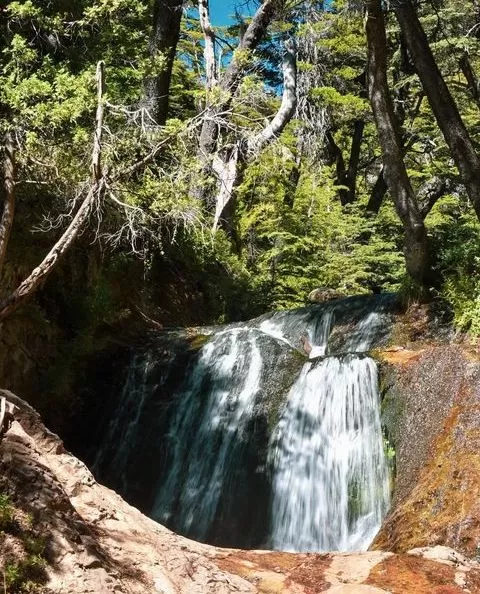
Cascada de Los Duendes is a mesmerizing natural wonder that never ceases to amaze visitors with its stunning beauty. The waterfall drops down from a height of 25 meters, creating a breathtaking sight that will leave you awestruck. T
he base of the waterfall forms a tranquil pool of crystal-clear water, enveloped by rocks and verdant foliage. This picturesque location is ideal for capturing stunning photographs or just unwinding amidst the serenity of nature’s bounty.
The Yungas jungle enveloping Cascada de Los Duendes is a thriving ecosystem that houses a diverse range of wildlife. Visitors can observe vibrant bird species such as toucans, parrots, and hummingbirds, as well as primates like monkeys, jaguars, and ocelots.
The jungle is also abundant in plant life, including fascinating species such as orchids, bromeliads, and ferns. It’s a nature lover’s paradise, offering a unique opportunity to connect with the natural world and witness its wonders up close.
Cascada de Los Duendes is not just a beautiful waterfall but also offers a range of adventure activities. Visitors can go trekking through the jungle, swim in the pool beneath the waterfall, or go rappelling down the waterfall. The adventurous can also try zip-lining through the jungle canopy.
Cascada de Los Duendes is located in the province of Salta, in northwestern Argentina, and is nestled deep within the Yungas jungle – an area renowned for its rich and diverse range of plant and animal life.
With a height of approximately 25 meters, the waterfall is set amidst a verdant landscape of lush greenery, offering an idyllic escape for those looking to immerse themselves in the natural beauty of the region.
It’s a must-visit destination for any nature enthusiast, providing an opportunity to witness the awe-inspiring spectacle of one of Argentina’s most breathtaking natural wonders.
3. Cascada Escondida, El Bolsón
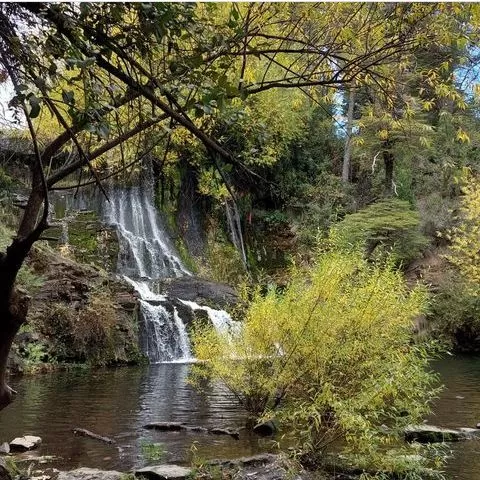
Cascada Escondida, which translates to “hidden waterfall” in English, is located in the southern Argentine province of Río Negro, just a few miles outside of El Bolsón.
The waterfall is not widely known, even among locals, making it a true hidden gem of the region. Visitors who make the journey to Cascada Escondida are rewarded with breathtaking views and a tranquil atmosphere that’s hard to find in other parts of Patagonia.
The town of El Bolsón is located about 80 miles south of San Carlos de Bariloche, and can be reached by bus or car. There are several bus companies that offer daily service to El Bolsón from Bariloche, as well as other major cities in Patagonia. If you’re driving, the trip from Bariloche takes about two hours on Route 40.
Visitors need to take a short hike through the valley, which is relatively easy and takes about 45 minutes to an hour each way to reach Cascada Escondida. The trail leading to Cascada Escondida is well-marked and runs alongside a stream that flows through the valley, creating a serene and calming atmosphere for hikers.
As they traverse the path, visitors can feast their eyes on the breathtaking views of the surrounding mountains and forests, turning the journey into a memorable experience in its own right.
Cascada Escondida is open year-round, but the best time to visit is during the summer months (December to February). During this time, the weather is mild and the days are long, making it the perfect time to enjoy the outdoors. The waterfall can also be visited during the winter months, but the hike can be more challenging due to snow and ice.
4. Cascada Los Cántaros
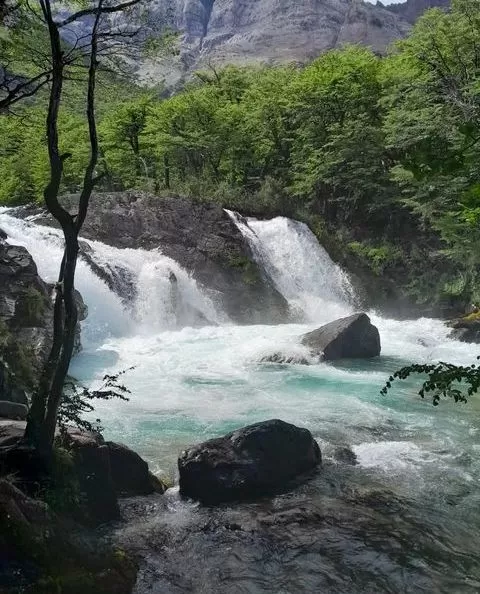
Cascada Los Cántaros, or “the jugs waterfall” in English, is situated in the western province of Neuquén, Argentina. Despite its stunning beauty, it remains relatively unknown, even to locals, making it an ideal destination to avoid the crowds and soak up some peace and quiet.
The waterfall is located about 15 miles north of the town of Aluminé, and can be reached by car or bus. If you’re driving, take National Route 40 to Provincial Route 23, which will take you directly to the waterfall. If you’re taking the bus, there are several companies that offer daily service from Aluminé to the nearby town of Villa Pehuenia.
To reach the waterfall, visitors need to take a short hike through the valley. The hike is relatively easy and takes about 30-45 minutes each way. The trail is well-marked and follows the stream that feeds the waterfall. Along the way, hikers can enjoy breathtaking views of the surrounding mountains and forests.
5. Salto De La Moneda
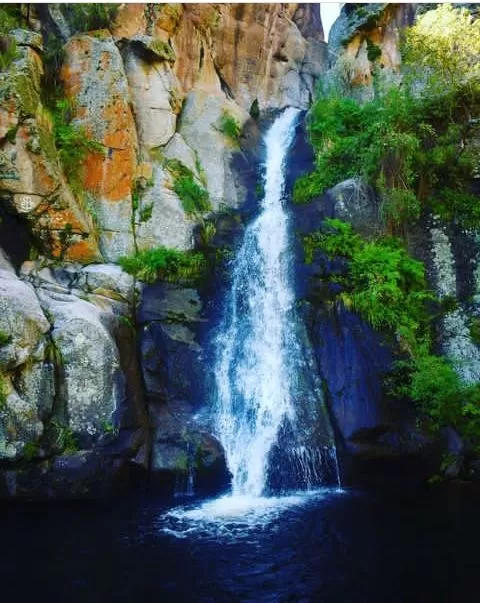
Salto De La Moneda is a magnificent waterfall that is 30 meters tall and is surrounded by lush green forests and mountains. The waterfall cascades down a rocky cliff into a small lagoon, creating the perfect setting for swimming and relaxation.
The sound of the water crashing down creates a peaceful ambiance, making it an ideal place to escape from the hustle and bustle of city life.
Salto De La Moneda is located in the province of Neuquén in Argentina, near the town of Villa La Angostura. It can be reached by car from the city of San Carlos de Bariloche, which is about 80 kilometers away. Visitors can also take a bus to Villa La Angostura and then take a taxi or rent a car to reach the waterfall.
The main activity at Salto De La Moneda is swimming in the crystal-clear waters of the lagoon. Visitors can also hike to the top of the waterfall and enjoy the panoramic views of the surrounding landscape. Additionally, there are picnic areas near the waterfall where visitors can enjoy a picnic lunch amidst the beautiful scenery.
6. Cascadas Ñivincó
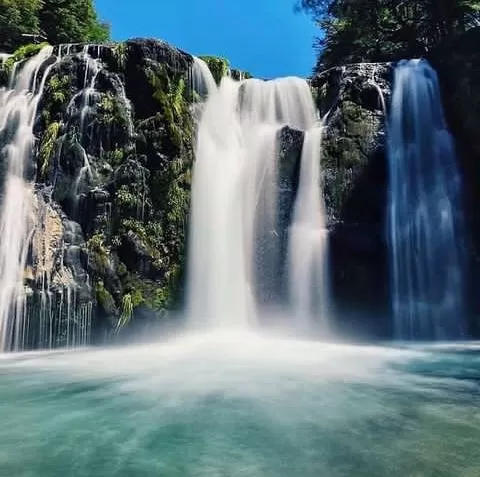
Cascadas Ñivincó is located in the province of Chubut in Argentina, near the town of Esquel. The waterfalls can be reached by car from Esquel, which is about 50 kilometers away. Visitors can also take a bus to Esquel and then take a taxi or rent a car to reach the waterfalls.
Cascadas Ñivincó consists of several waterfalls that cascade down rocky cliffs into a turquoise pool of water. The largest waterfall stands at over 30 meters tall and is surrounded by lush green forests and mountains. The sound of the water crashing down creates a peaceful ambiance that makes it an ideal place to relax and soak up the natural beauty.
The main activity at Cascadas Ñivincó is hiking to the waterfalls and enjoying the stunning scenery along the way. Visitors can also swim in the pool of water at the base of the waterfalls or picnic in the beautiful surroundings. Additionally, there are several hiking trails in the area that offer panoramic views of the surrounding landscape.
7. Rio Colorado Waterfalls
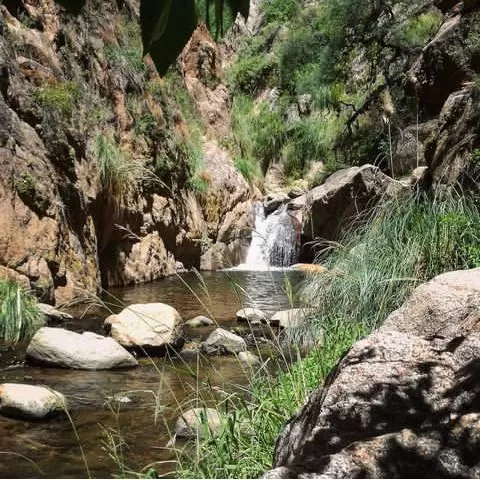
The Rio Colorado Waterfalls are located in the province of Neuquén, in the Argentine Patagonia. They are situated on the Rio Colorado, a river that flows through the province and empties into the Atlantic Ocean.
The falls are located in a remote area, and they can be accessed by car or by hiking. The recommended time of year to visit is during the summer months, when the weather is mild and the water flow is at its peak.
The Rio Colorado Waterfalls are a series of cascading falls that extend for over 20 meters. They are surrounded by lush vegetation and impressive rock formations, which add to their natural beauty.
What sets these falls apart from other waterfalls is their unique rock formations, which have been shaped by millions of years of erosion. These formations create a natural amphitheater that enhances the falls’ beauty and makes them a popular spot for photographers.
8. Salto del Tabaquillo
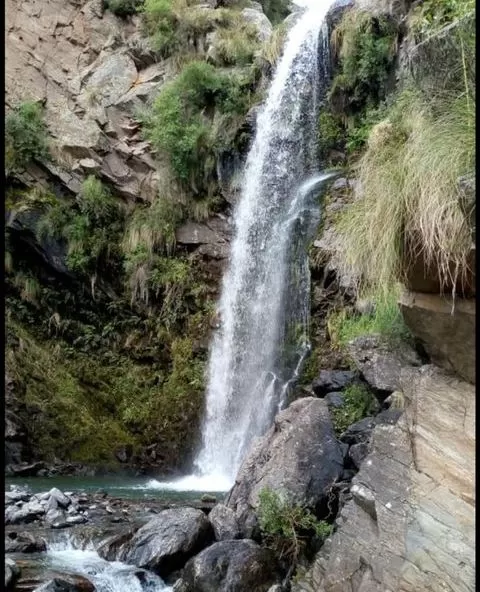
Salto del Tabaquillo is a majestic waterfall that drops approximately 30 meters into a natural pool below. The waterfall is surrounded by a lush forest of native vegetation and is fed by the Tabaquillo River. The river flows through the Sierra de las Quijadas National Park, which is a protected area known for its unique landscape and biodiversity.
Salto del Tabaquillo offers visitors the opportunity to explore the area by following one of the many hiking trails that lead to the waterfall. The trails cater to hikers of varying levels of experience, with some being suitable for families with young children, and others being more challenging.
While hiking, visitors can enjoy breathtaking views of the Sierra de las Quijadas National Park and its unique rock formations.
The Sierra de las Quijadas National Park boasts a rich variety of wildlife, including guanacos, pumas, and condors. Those who visit Salto del Tabaquillo might be fortunate enough to catch a glimpse of these animals while hiking to the waterfall. It’s important to note that the park is a protected area, and visitors must not disturb or harm any of the wildlife.
9. Chachin Waterfall – Hua Hum
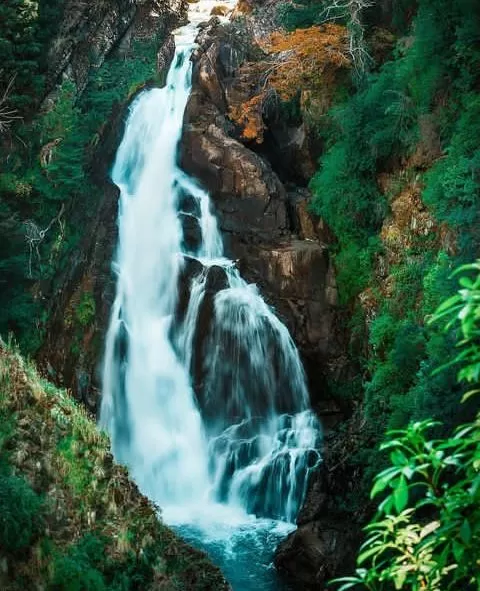
Located in the southern region of Argentina, near the border with Chile, the picturesque town of Hua Hum is known for its stunning natural beauty. The town is a popular destination for outdoor enthusiasts and nature lovers, and one of its highlights is the Chachin Waterfall. This hidden gem is well worth a visit for those seeking a unique and memorable experience.
The Chachin Waterfall is a breathtaking sight, dropping over 20 meters into a crystal-clear pool below. The waterfall is surrounded by a lush forest and is fed by the Chachin River, which flows through the Lanin National Park. The area around the waterfall is perfect for a picnic or for simply taking in the natural beauty of the surroundings.
Visitors to the Chachin Waterfall can explore the area by following one of the many hiking trails that lead to the waterfall. The trails vary in difficulty, with some being suitable for families with young children and others being more challenging for experienced hikers.
Along the way, hikers can enjoy stunning views of the Lanin National Park and its unique flora and fauna.
The Lanin National Park is home to a diverse range of wildlife, including deer, foxes, and condors. Visitors to the Chachin Waterfall may be lucky enough to spot some of these animals during their hike. It is important to remember that the park is a protected area and visitors should not disturb or harm any of the wildlife.
The best time to visit the Chachin Waterfall is during the summer months (December to February) when the weather is warm and the water levels are at their highest. However, the waterfall is a beautiful sight year-round and visitors can enjoy hiking in the area during the cooler months.
10. Chorrillo del Salto
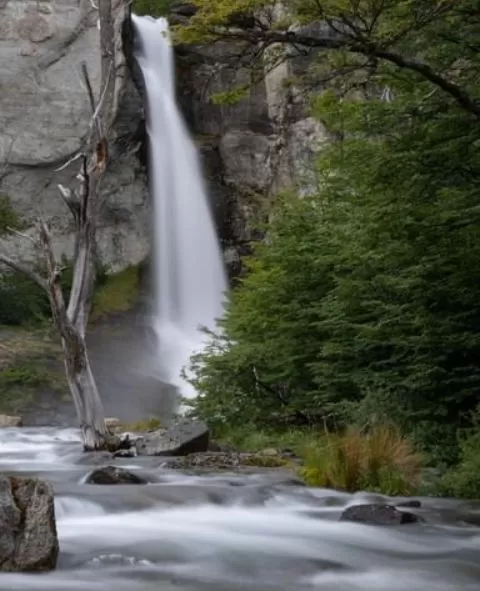
Chorrillo del Salto is located within the Parque Provincial Salto Encantado, approximately 140 kilometers from the city of Posadas. Visitors can reach the waterfall by car, taking a scenic route through the park. The journey takes approximately two hours and visitors are advised to bring sturdy shoes and appropriate clothing for hiking.
The Chorrillo del Salto waterfall is a majestic spectacle, cascading from a towering height of over 60 meters into a tranquil pool below. It is hemmed in by lush vegetation and towering trees, engendering a serene and tranquil environment. Visitors can soak in the captivating beauty of the waterfall from one of the conveniently located viewing platforms nearby.
The Parque Provincial Salto Encantado provides an array of hiking trails that are open to visitors for exploration. The trails come in varying degrees of difficulty, with some catering to families with young children and others tailored to challenge even the most experienced hikers. While traversing the trails, hikers can bask in the captivating sights of the park’s unique and exotic flora and fauna.
The Parque Provincial Salto Encantado boasts a rich variety of wildlife, from the resounding howler monkeys to the striking toucans, and even the elusive jaguars.
Those who venture to the Chorrillo del Salto waterfall may have the fortune of spotting some of these magnificent creatures on their hike. However, it is crucial to remember that the park is a designated protected area and all visitors must avoid any disturbance or harm to the wildlife.
The optimal time to visit Chorrillo del Salto is during the rainy season, which spans from October to March. During this time, the waterfall is at its fullest and most magnificent. Nonetheless, the waterfall remains a beautiful sight throughout the year, and visitors can enjoy hiking in the area during the drier months.
Thank you for reading this article.
Related articles
DiscoveringThe Natural Beauty Of Asenema Waterfall
The Twin Waterfall In Ghana – Boti Falls
Akaa Falls: Exploring The Hidden Gem Of Ghana
Top 20 Destinations In Philippines For Tourism
